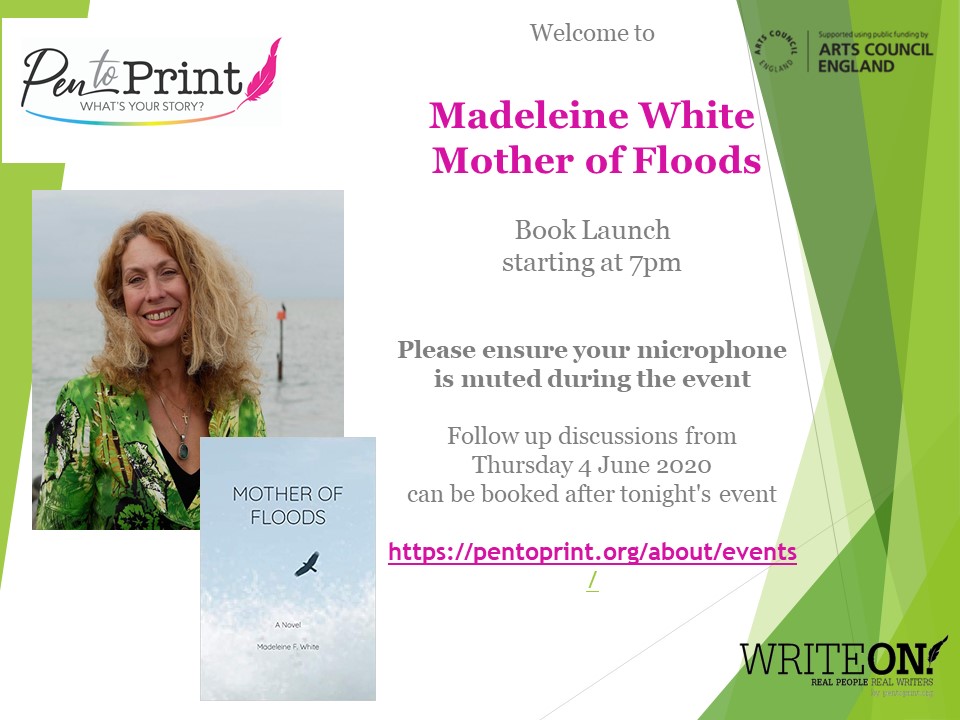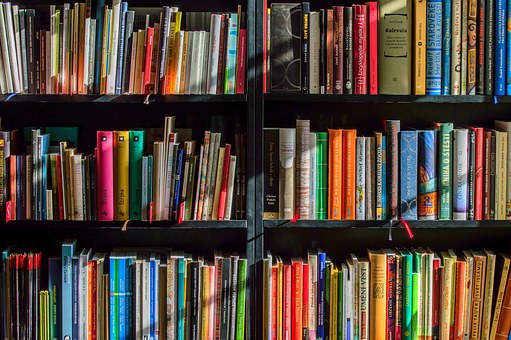Mother of Floods Launch – Transcript, Trailer and Performance
Video Trailer Introduction:
A. Part 1 Introduction – the importance of recognising ourselves as creators of what we want to see and be
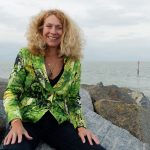 Thank you – Lena and Lisa and Pen to Print for hosting. Also, fellow presenters, Emily, Marianne and Alex and Lewis from Crowsnest Books and of course everyone here who has supported my journey and who is attending now, including my lovely new friends and colleagues from Write On! and Pen to Print. Congratulations to Dan Cross who has just found out today he is on the shortlist for the Wilbur and Niso Smith Unpublished Manuscript Prize. Some of you were there when we launched Nina magazine in the House of Commons with the World Bank in 2014 – that night there was a tube strike. For this Mother of Floods launch celebration, we’re in the midst of a pandemic; it’s never easy, is it!
Thank you – Lena and Lisa and Pen to Print for hosting. Also, fellow presenters, Emily, Marianne and Alex and Lewis from Crowsnest Books and of course everyone here who has supported my journey and who is attending now, including my lovely new friends and colleagues from Write On! and Pen to Print. Congratulations to Dan Cross who has just found out today he is on the shortlist for the Wilbur and Niso Smith Unpublished Manuscript Prize. Some of you were there when we launched Nina magazine in the House of Commons with the World Bank in 2014 – that night there was a tube strike. For this Mother of Floods launch celebration, we’re in the midst of a pandemic; it’s never easy, is it!
I’m so delighted to see people who have contributed and helped, including my immediate friends and family, as well as others such as Andy Green who provided support around how a virus would work; Samar, dear friend and businesswoman whose mother Nouriya told her story in the augural edition of Nina Magazine and Badnenan, a doctor and friend, who has kindly leant her name to the Badenan in Mother of Floods. Both women of power and conviction; as are Charlotte Kalin, Linda Denny, Felicia Muriuki, Sue Lawton, Nicky Hatting and my early reader and cheerleader Eden Jessiman. All of whom, technology permitting, are planning on joining us tonight. I could go on… but please all of you, accept my my deepest thanks for being here on this unprecedented evening in these unprecedented times.
The next hour will fly by. Limited as we are by the constraints of the digital world, I’d like to share with you that as as we go through this time together, I have planned three follow-on Zoom discussion groups, which will be free to join as follow up from this evening. You will be able to sign up to the first one on Eventbrite at pentoprint.org events.
*****
As always, I’ve been inspired to kick off this evening with someone’s story, which triggered an idea in me.
A friend of mine judges a young person’s writing competition (15-22 year olds). This is her third year of doing so and the entry date spanned part of lockdown. She shared with me that the nature of stories received has been very different this time… fear-filled and violent, many inhabiting dystopian worlds they need to flee from. This is an example of how creativity is being forced inwards due to the unprecedented COVID and therefore fear-driven times. It is particularly worrying, as it is the world-vision of 15-22 year olds.
Is this because they are forced inwards and they are writing about the world that they have determined is real internally, because there is no real outside stimulus/ influence as the moment?
The power of the creative is to create worlds within worlds. If current circumstances are causing young people to create worlds of violence and fear, that is reflective of where we are at as well; the difficulties we have with coping with the unknown. We like the comfort of world views that are presented to us on a plate. One of the reasons we like magazines so much, they are designed to present us with an ideal world view that people are then compelled to join: tribes of gardeners, homemakers, knitters, fashionistas, runners. However, as with everything, all this depends on external creation. And at the moment, there is very little of that going on.
So, if we are forced inwards, are we going to be like those young writers , who don’t have the library of experiences to drawn from that older people do? Or are we going to face a future yet to be determined, by allowing ourselves to look beyond what we think should be, into what could be? Not just that – are we able to shape it into these ideas, by using our own creativity to build tribes around what we want to see in terms of value and values?
My friend, best-selling author and speaker Rabia Siddique, who can’t join us as she is in Australia and the timing don’t work, asked me about my primary inspiration and also the legacy I wish to come from Mother Of Floods?
Quite simply, my inspiration is that I believe we have the power of creation within us. This has been demonstrated again and again in my life and through the stories of all those women and men I have heard and shared, many of them contained within Mother Of Floods.
And my legacy? Well, the digital world already answers our call, but can we manifest it more positively, more holistically, by binding in the spiritual world and our physical energy also? I want Mother Of Floods to shift the focus. The cult of consumerism and individualism defined our pre-COVID world. I believe by magnetising each other using the digital world, with powerful ideas inspired by present experiences and stories from humanity’s deepest past that we communicate through cutting edge technology, we can move towards a world that is kinder and more sustainable.
Like the young people I mentioned, we have the potential to use our creativity to augment our fears. However, we can apply it differently also, into positive co-creation; by finding a framework for shared experience, strength and hope. Like ancient societies we can come together through a common vision and shared ideals. What is needed is a ‘Safe Space’, that allows these connections to happen.
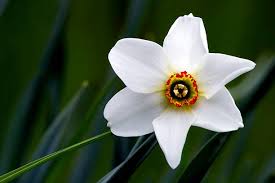
Mother Of Floods is a conduit, creating a framework that allows us to understand what we are capable of: a Safe Space that shows us how to straddle the dimensions as creators, rather than victims. As my friend Linda Denny, President Emeritus of the US WBENC organisation, says; “bloom where you are planted.” To do that though, we need to get the soil ready.
In the following hour, we will be looking at how we can do this: exploring the worlds we create and looking at how we can work together to manifest them. There will also be a call to action at the end, pointing to the follow-on Zoom discussions. Of course if you’d like to buy Mother Of Floods and share reviews and ideas that would be great as well!
*****
A wonderful example of using creation to drive change, comes from nurse Emily Jackson. As a teenager Emily used her writing to give her anorexia a name and a shape, which she could then combat. The White Rabbit Story she shared with me five years ago, has been central to Mother Of Floods.
B. White Rabbit and introducing Emily Jackson, the inspiration behind Emmy
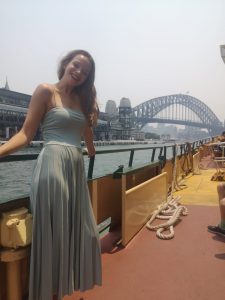
Extract 1: Emmy
Emmy writes:
For it was too dark to see anything as Alice tried to look down and make out what was coming. For Alice was now alone, isolated from the world above; the happy, carefree world of light only barely visible through the cracks of her own existence. Down, down, down, dragged down into the depths of the rabbit hole, farther away from the world where her brother lay contentedly reading his book. That other world, which Alice yearned to wander, but from which she was excluded.
Yet as Emmy ran her delicate fingers over the prominent outline of the protective frame of her ribs, she felt, at least for now, momentarily reassured.
This comes a bit later:
Emmy’s story had also lightened Martha’s day. Just the fact that she was writing again was amazing. Others needed to see it, though. This idea of White Rabbit with his stopwatch being the ever-present embodiment of the disease, was a powerful image and one that showed tremendous self-awareness. She reached over to her bedside table, picking Emmy’s story up again.
He was never far behind. You see, Mr Rabbit made sure he was never late. Somehow, he would find a way. A way to burrow into her thoughts. Oh, how could anyone begin to believe such a small being would be capable of creating such disastrous chaos? Surely though, the rabbit is Alice’s friend in this mad wonderland she now inhabits?
Introduction to Emily Jackson:
Emily, thank you for your bravery and the way you submitted your story to me in your late teens. I know from what you have said, The White Rabbit Story came from you wanting to name the darkness inside you. Please tell us more about your journey.
Follow this link for Emily’s Mother Olf floods speech from the 28th May – or click text image below for full transcript.
C. Marianne Schoenig introduces us to Badenan and Fatima
Extract 2, Badenan and Fatima
The Better and the Bad – Chapter 2
Badenan woke with a start. The she-wolf had been there again, growling and prowling. Hiding in the shadows of the country house in Kurdistan’s Zagros mountains, the dark one of legend was lying in wait for the lost girl she’d once been when she lived there.
It had been at their family retreat, near Slemani. Perched right on Dukan Lake, with its whitewashed walls and its blue-tiled veranda, the image remained vivid, even all these years on. Her father had been barbequing skewers of goat’s meat, and sitting on the shaded veranda overlooking the lake, her aunties had been responsible for the heaped platter of stuffed vine-leaf dolma. Her older sister Shl’er, a sophisticated student in her final year, sat there exuding glamour, the red of her fitted summer dress matching that of the kitten heels she refused to take off. Their beautiful mother was heavily pregnant and unmoving in her unwieldiness, one hand shading her sea green eyes and the other waving a brightly coloured fan. Badenan’s uncle pinched the fifteen-year-old’s cheek harder than necessary. His patting of her bottom was also inappropriate. Even now, the fifty-two-year-old felt outrage at these overfamiliar advances, sneaked when no one was looking. However, the endless rounds of fluffy Purgach flatbread, and then the coffee…. If she kept her eyes closed, she could smell the cardamom, see her bed and the beautifully woven carpet she’d set her slippers on.
Despite Badenan’s near womanhood, her mother, hands jingling with delicate filigree bangles, had tucked her in. And the cloves, the unique scent that clung to Kurdish women thanks to the necklaces made of the dried buds that also hung around the house — it all meant home.
And then it had changed. The smouldering barbeque and the soft, laughing voices turned into hot, devouring smoke. When fear turned to panic and goat’s meat became crackling flesh, she saw the yellow, watchful eyes for the first time. From the stories of her people, she knew they meant danger and harm, but oddly, in all the chaos, they provided a measure of comfort. So, instead of running away, she had followed the grey form out through the smoke-filled corridor and into the scrubland beyond.
The wolf had waited for her. While allowing her to cling to the silvered ruff, she’d somehow hidden the girl from the uniformed figures that were everywhere. As the air became less choking, Badenan had dared to close her streaming eyes. But when she opened them just moments later, she realised she was alone, hidden by the remnants of a stone wall.
Gasping for breath and rubbing her eyes to clear her vision, she tried to catch a last glimpse of her companion. However, look as she might, the parched red earth gave no hint of the wolf’s passing, and, other than revealing many booted footprints, it also did not share where so many of her family had been taken that day.
Introducing her daughter Fatima
Fatima, the subject of all this maternal angst, was only a few feet away, brush tugging away at the mass of dark hair that swathed her small form. Listening for every tiny sound from beyond her door, she sat at her dressing-table-cum-desk and eyed the doll sitting on the chair next to her. For the thousandth time she wished she were able to emulate Farah’s remote, unconcerned stare. Instead of having her own pretty features likened to those of a doll, she’d often thought how wonderful it would be to go one step further. She wanted to embody Farah’s glassy stoicism, becoming equally inanimate — no matter what life threw at her. Farah was one of the few remnants of her childhood that had come with them when they’d moved to her much older husband Hassan’s apartment.
 Marianne’s general remarks:
Marianne’s general remarks:
“Madeleine, that was beautiful. Warmest congratulations on your launch celebration – you know how much our long-standing friendship means to me, we’ve always supported each other on our journeys, and trusting relationships are such key themes of Mother Of Floods. You’ve always been so passionately and whole-heartedly committed to helping people at the margins to have more of a voice, and it’s wonderful to see the accelerating interest in these crucial messages for our times, held so resonantly in your characters and stories.”
Marianne’s observations:
“What’s standing out for me in Badenan’s and Fatima’s stories is that Badenan, the mother, has been through hell – her almost idyllic family life torn apart in minutes when she was 15, and narrowly escaping with her life, and heartrending challenges ever since. And Fatima, the daughter, is still living in hell at the hands of a brutal husband more than 30 years her senior, with her mother unable to protect her and having played a key role, despite her best intentions, in getting them into that situation in a time of few other options. Initially, things deteriorate even further, and Badenan and Fatima would appear to have every justification to slide deeply into despair, depression, addiction or worse.
However, right at the end of Chapter 1, when it appears things are hopeless, very unexpectedly and almost supernaturally – as it’s ‘definitely the wrong season’ – Badenan notices, on some derelict land, a small clump of Nergis flowers, reminding her of her homeland and a better time. They represent spring, renewal and hope. Badenan determines to return and collect the flowers and their bulbs as a gift for Fatima. The flowers seem to be that initially, small hint for mother and daughter that there is a caring spirit in the Universe after all. A positive chain reaction – albeit sometimes two steps forward, one step back – manifests for them both from that point. Badenan and Fatima have a choice to either let their respective traumas define who they will be for the rest of their life, or to somehow find strength and tap into inspiration to help them enlarge their vision and focus and hearts.
Fatima finds it in her heart to forgive her mother and Badenan starts on the path to forgive herself, and the deep pain they hold starts to reduce its grip, enabling more positive thoughts and ideas to take root in the consciousness of each of them and their life together. Badenan’s and Fatima’s stories seem to be reminding us that the journey to healing can be very hard, almost always depending on mutual and trusting support and, if we are blessed enough to access this, strength outside ourselves. Their stories show that if we muster up the courage to take the risk, it will be worth it.”
Marianne’s Question: Madeleine, I’m wondering where you found your inspiration for the characters of Badenan and Fatima, and what would you like to happen to maintain and build on the momentum of the Safe Space idea which is so needed in the world right now?
Madeleine: Badenan, a strong and courageous Kurdish survivor of the Saddam regime, is here with us tonight, calling in from her shift with her fellow gynaecologists and surgeons from the Royal Free in London. However, the story of Badenan the character, who my wonderful friend leant her name to, is quite different. That story is based on the many women I met, in Iraq and in other parts of the world including Sweden, who shared with me what they had survived, and the courage it took to rebuild their lives. What binds them is the stoicism I tried to convey through Fatima. The other thing is that often, none of what they survived is ever spoken about. This silence means that this trauma is hidden, sitting silently at the heart of communities. I think this has a massive impact on societies in conflict. I also touch upon this in Badenan’s decision of whether to sacrifice her daughter to ensure both their safety. This is central to their stories in Mother Of Floods. Sadly, Fatima fares much worse than her mother had expected. These heartrending stories are peppered throughout the Iraqi community and indeed, those of many women and girls in communities across the world torn by war, famine and disease.
In terms of building on the Safe Space idea; I believe the digital world offers a way to deal with some of the things touched upon above, especially using storytelling. To me, Pen to Print and Write On! Magazine represent such a place: to the point that the domain name I bought several years ago asafespace.or.uk, is pointing at a pentoprint.org! We need to use this digital space we have built in these unprecedented times to have discussions across borders: geographical cultural, mental, emotional and physical. To that end, I am setting up the follow-on Zoom events which I hope people will be able to participate in. I am aiming to create a report to support the ideas we collate. This will be offered as a Think Tank report to creative and government organisations, including the Arts Council England.
D. Questions
 1. Sue Lawton MBE: Some of the women in your book are victims of other influences, not free to make their own choices. Martha and Dave, Fatima and Badenan as well as Hassan; even Emmy, haunted as she is by her anorexia. When you planned your book did you deliberately set your characters on a road to freedom, using them as demonstrations of women’s empowerment? And, if so, do you believe that the majority of women are dominated by others preventing them from reaching their true potential?
1. Sue Lawton MBE: Some of the women in your book are victims of other influences, not free to make their own choices. Martha and Dave, Fatima and Badenan as well as Hassan; even Emmy, haunted as she is by her anorexia. When you planned your book did you deliberately set your characters on a road to freedom, using them as demonstrations of women’s empowerment? And, if so, do you believe that the majority of women are dominated by others preventing them from reaching their true potential?
Madeleine: I believe we all have choices, and that these, are central to claiming our space in the world. At the beginning of Mother Of Floods, when we first meet the characters, none of them own who they are. They are all trying to be something they think the world wants to see. As the plot develops, they start claiming their own identity and beliefs, until they finally, have the courage to be who they are, magnetising others around them, with help from digital and spiritual dimensions, including our internet with a soul. Of course, one of the central themes is, that by doing this, they create ripples and waves; able to sweep the world along with them.
There are many things preventing women from reaching their potential. In some countries these barriers are direct and physical, linked to systems that seem to promote gender inequality, ownership/ property laws or cultural dictates. Wherever there is conflict, women bear the brunt of it. However, we ourselves often make choices that lead us down paths of fear, rather than opportunity. I think with Mother of Floods I wanted to explore what could happen if we had the courage to press the reset button; moving from faceless, nameless beings into magnetising interactions that can be truly meaningful.
2. Sue Lawton MBE, follow-on question. Based on everything I have heard tonight I’d like to ask this also: What do you think is the power of creatives is and do you believe they have responsibility to help drive social change?
Madeleine: I think creatives are able to absorb what is happening and translate it into frameworks and opportunities that connect. In my case and speaking for us writers, it took me years to work out I was a ‘Storyteller’. That the stories I heard in the course of my journalistic, and international development career potentially had more power when frame-worked as fiction. Essentially it was / is my job to tell them in a way that connects people: whether the are impact investors, community leaders, philanthropists or business leaders; or anyone else who wants to hear for that matter! No matter which walk of life they come from, stories can be the Rosetta stone that forges connections.
Mother of Floods draws on my work in international development and technology over the past decade, as well as the role of Storyteller I have been trying to fill all my life. From my own German and Canadian First Nation roots, one experienced, one researched, I have tried to cobble together a new kind of culture by using the stories of four women to challenge boundaries of geography and expectations. The blood of the past links the hopes of the future; and all are protected by the digital repository of knowledge. This is absolutely relevant for us also, as these concepts are are the centre of what we need to embrace to move past the Downfall we are facing now.
I think creatives have the power to lead the way and should pick up that gauntlet.
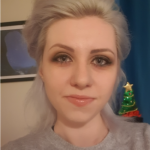 3.Holly King: What was it that made you realise this was a novel? Was it a particular idea, or a scene or character etc.? How did it come to you in your mind?
3.Holly King: What was it that made you realise this was a novel? Was it a particular idea, or a scene or character etc.? How did it come to you in your mind?
Madeleine: Emmy’s story, but also all the other stories I’ve started to referring to here, were bubbling inside me. Examples include: Rose from east Africa with her Moringa business, Nadwa the creator of the Charity Living light, which amongst other things turns Baghdad rubble into children’s gardens, the brittle beauty of a Taiwanese mogul. The latter jumps out particularly, and is a counterpoint to the wonderful and, sadly late, Indira Abidin, CEO of a huge PR company in Indonesia. Indira, a self-styled ‘Chief Happiness Officer’. was tremendously supportive of Mother Of Floods, her energy and information inspiring Anjani’s transformational journey in Mother Of Floods.
All these tales filled me to the brim and so, one day, started coming out. The moment came when I was doodling. My image evolved into something similar to what I’d seen in the Museum of Anthropology in Vancouver, a stylised turtle shell. I used the pattern on the ridge, four interwoven strands, to form a visual of how I would interweave the stories of my four main protagonists. This made me realise I had to pull their stories together and the image gave me an idea of how to do so.
4. Nicki Hattingh, Film Producer & Dog Lover: There are several moral and ethical dilemmas within the storyline of Mother Of Floods, but what would be the one overriding message you would like to convey to your readers and why?
Madeleine: Hope! No matter how difficult your path there is always hope. We can all make mistakes and take the wrong turn on the road. Sometimes, like Badenan, we choose one evil, because we think it is better than another. But, in the end, like Mercy in Zimbabwe, who’d spent much of her adult life living a lie, although we are defined by our experiences, we are not held there.
Through the Zimbabwe birds, embodied by Hungry the Fish eagle, I wanted to show we can fly free. There is hope, love and wonder even in the most mundane and, if we believe that things can be different and act accordingly, the possibilities are endless…. Hence my offer of the follow-on discussion groups around some of the key messages we’re touching upon tonight.
5. Roland Marshall: I want to ask about Thanet as a place of writing. Does its position in between sea and countryside help you straddle the dimensions you touch upon in your work?
Madeleine: I think I’m part mermaid and part centaur! Some of you will know how important my horse is to me and how much I enjoy exploring the beautiful countryside in this corner of Kent. However, I am also by the sea and walking and running by the sea gives me a great deal of pleasure, not to mention swimming! In my eco-feminist ‘bit’, as some people have called my response to nature in my book, the fields around St Nicholas are strewn with Nergis flowers and Moringa trees.
Seen from a deeper perspective though, Thanet comes from the word Tanatos, which means ‘Isle of the Dead’. I believe there is tremendous spiritual power here. The Neolithic Shell Grotto, as well as monuments such as St Augustine’s Cross (bearing testament to the spot the saint landed to bring Christianity to the British Isles) point to this heritage.
6. Rahat Ismail: You touch upon difficult social issues in your writing, especially cultures that aren’t your own. Have you had any criticism around this?
Madeleine: There have certainly been issues and worries in terms of cultural appropriation and how using my First Nation Roots in my writing might be perceived; in Canada in particular. This is my retort..
I have spent my life building my identity and earned the right to speak out as a person I choose to be. It’s up to the reader to determine whether I have something of value to say, wherever I happen to come from, I have chosen to create a Safe Space for my own voice and invite others to join me.
Acadmics like Gayatri Chakravorty Spivak[1] have helped me along the way.
“A hundred years ago it was impossible for me to speak, for the precise reason that makes it only too possible for me to speak in certain circles now. I see in that a kind of reversal, which again is a little suspicious.”
In a world that is seeing the biggest movement of population since the second world war – just over 258 million migrants being spread across just 20 destination countries, what is their identity? Do they remain Iraqi, or Nigerian or do they identify as British or American? This is a massive issue. And it isn’t just based on the latest migration figures. Like myself, many ostensibly white British, American or European people are in fact second or third generation diaspora. What are the implications when talking about discovery of a new kind of culture (as opposed to appropriation of the old)?
Storytelling is just as important as it ever was. It is in this new sandbox of our changing world we will indeed define culture. By questioning and sharing, we as individuals will be able to collectively move away from being defined by where we were born and what colour our skin is, to defining the place in the world we occupy now. If we draw on the lessons our cultural heritage has bestowed upon us, while moving into the future with the globalisation that is driving every aspect of our lives, we become stronger and will so be able to contribute to a more cohesive society..
In the end we are all diaspora from somewhere, in time or space or both. A writer’s imagination is able to unify and reassemble, dipping into nostalgia while creating a future path that one day people might tread, because it has come from the writer’s imagination.
E. Publisher Q&A
Crowsnest Books![]() is a Canadian/ US based Small Press, publishing thought-provoking genres and ideas. Thanks to Alex and Lewis for joining us tonight.
is a Canadian/ US based Small Press, publishing thought-provoking genres and ideas. Thanks to Alex and Lewis for joining us tonight.
“We met Madeleine through the #cantlitpit twitter pitch party. It was a short pitch but when Madeleine submitted and we engaged with her writing, we were drawn in by the beauty of some of it, including the story of Fatima and Badenan. Fatima as a doll in particular, and then, there was a bit near the beginning about how Martha, the main protagonist, felt she was disappearing, finding herself clutching a supermarket basket with an invisible hand. Madeleine had something to say and we bought into that. There was supposed to be a physical launch for Mother Of Floods in Toronto, this didn’t happen because of the pandemic. So, we decided to approach the whole thing differently. This included the creation of a special Covid-Edition. Mother Of Floods is a book that explores a digital world across the dimensions. By refocussing how we launch and share in this new coronavirus land, we are using it to come together. It’s a challenge for a launch, but a good one!”
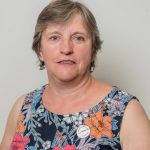 Eithne: Does manuscript length matter? How much does voice count? For example, do you prefer a straight narrative or multiple voices/ time-shifts?
Eithne: Does manuscript length matter? How much does voice count? For example, do you prefer a straight narrative or multiple voices/ time-shifts?
Yes, length matters, both from the perspective of cost and, it is also suggestive of tightly edited vs. not. Max 100K words, I’d suggest. Also, voice is a great way to add a perspective to the story. Pick something and lean into it. It can be shifts, it can be single, but it should add depth to the story,
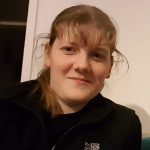 Michelle: Do you specify in a particular genre? Do you prefer standalones or books with potential for series? And what are your views on books/series that share or are part of a linked universe?
Michelle: Do you specify in a particular genre? Do you prefer standalones or books with potential for series? And what are your views on books/series that share or are part of a linked universe?
We’re open to almost any genre, but we especially like books that cross-genres like Mother Of Floods for example. Authors should do their research though, getting to know both who your audience is, as well as how you fit what publishers are looking for. From a business standpoint, series make sense. But for debut, or even just relatively new authors, don’t hold back, complete the story. TBH, I groan at the mention of a series. Maybe shared universe is a way to split the difference on that. Madeleine for example is writing Sisters Of Storms, not exactly a sequel, but following the story of Emmy and a new protagonist, certainly within the same universe.
F. Lena Smith – working with Madeleine on Pen to Print, Write On! and Write On! Extra

“We came across Madeleine when she entered the Pen to Print poetry competition a couple of years ago and was placed. She came up to us and showed us Oi! Magazine and Nina, and we recognised what an opportunity this way of working (publishing through the co-creation process with our target audience), could be for Pen to Print. We have gone from strength to strength since, launching Write On! our print magazine which has enable to build upon our connections with the traditional publishing industry (see this write-up in the Bookseller). This, of course, helps the emerging and diverse writers who form a big part of our network. Due to the constraints of lockdown, the latest edition is published in PDF form only. However, there has also been a very positive response to these unprecedented times, leading to another stage in our development. Through lockdown, we have created Write On! Extra, our daily digest for these unprecedented times. We’re delighted to be working together and wish Madeleine well, both with us and with her career as an author.
I’d also like to announce the recipient of this evening’s give-away copy of Mother Of Floods. The winner has been picked out of a hat from the list of participant Email – Frank Riverman. Please do message us Frank with you address, so we can send you a copy!
G. Conclusion: Madeleine
I am a Storyteller and my job is to collect stories from people and places I meet and transform them into a framework that can inspire, teach and inform. Ultimately, it’s about turning words into the Word, the power of creation.
My call to action to you would be to buy the book (Amazon probably still easiest at the moment). Of course, if you like it, please tell your friends and share your enthusiasm by leaving reviews on Goodreads, Amazon and Google. I’d also like to invite you to participate in a follow-on discussion group which supports some of the ideas we have touched on tonight, the aim being to create a report around creative responsibility and connecting better – allowing us to be the change we want to see.
Do come along. You can book here. Second session is Thursday (11th June) next week, 7-9pm BST and the second topic will be:
A Safe Space and The Nature of Change
Mother of Floods has set out a framework, and the characters have looked at some of these ideas being presented. It is the starting point for co-creation in practice, and I hope one, that represents a new Safe Space for ideas. We all have networks, some like philanthropists Tony and Nadwa who have joined tonight and Bev Jullien the CEO of MU, an organisation with four million members. Charlotte Kalin, who created a huge trade and Women’s Economic empowerment network through the Swedish government is also with us. These people and, indeed, many of us here, have already created significant webs of light. With the right idea and message we can make them all overlap, and so, become part of important shared opportunity and experiences. By becoming Storytellers and creators we can make a difference… together we can define what we want our new normal to be.
Final Extract- The Song of Sh’ler
I’d like to finish with the Song of Shl’er, an adaptation of the poem I initially used to pitch to publishers and agents as a summary of what Mother of Floods was about. It sits at the start of the third part of Mother of Floods. You can listen here.
Song of Sh’ler
I
In the Age of the Downfall
The signs were read
Linking Watcher to Seeker
Else all would be dead.
Within the destruction the Watcher tried
To create a new framework before the Ganges ran dry.
II
Four women living dysfunctional lives
Sought clues in shared stories
Of how to survive.
Anjani the Serpent in her high corporate tower
Fatima Wolf sought a child-filled bower
While Mercy the Eagle flew high to heal
Martha’s drumming decoding, revealed.
III
Then there was one who straddled the planes
The place of the spirit, the paths of the pain,
Lokozho binding all into one
His quantum existence, a digital one.
Once Martha’s husband
Now alive in a Web
In desperation he chose an alternative death.
IV
Uncontrolled pathways built by growth at all costs
The world’s resources, irreplaceably lost
But then, how to reclaim all that was taken
Returning power to places forsaken?
The network of women begun forging a way
For the rhythm of life to start holding sway.
V
As ancient myths and modern need
Combined to forge a new world creed.
The stories that shaped, saw people forgiving
With Nergis, Moringa — dead places were living.
As a virus scrambled what was created
It defeated encryption, forcing greed to be sated.
Next, paper finance disappeared in a flash
A newly formed conscience causing markets to crash.
And then there was water where oil once flowed
And in fields of slaughter new flora had grown.
VI
Earth’s stolen force bloated digital space
Taken to serve the empty needs of our race.
So, when the Web woke with a sentience given
It saw what was taken, what had to be shriven.
It sacrificed all to find release
And as its soul flew, gained freedom and peace.
282
MOTHER OF FLOODS
VII
The Wolf called the children to mother them all
The Eagle cried, causing nations to fall.
But to give power back to sea, land, and sky
More was needed, so the serpent died.
VIII
Anjani’s life force has seeded the seas
The Wolf and her children have used fire to release.
The Eagle’s vision has seen what was needed
Using spirit and air to help grow what was seeded.
Then words of power in binary coding
Were drummed by the drummer
And worlds started exploding.
IX
The turtle now turns, and it offers its shell
To keep all together, safe and well.
All is peaceful, and on we sleep
Till new shores are ready and our Arks are unleashed.
All beings together, we as gods straddle worlds
While knowledge and wisdom in love are unfurled
We will work as one people as the next age unfolds
And myths are reshaped as our story is told.
X
Last was the word, we were called by the drum
To give up ourselves, and so become one.
[1] (born 24 February 1942) is an Indian scholar, literary theorist, and feminist critic. She is a University Professor at Columbia University and a founding member of the establishment’s Institute for Comparative Literature and Society summed it up beautifully;
In the end we are all diaspora from somewhere, in time or space or both. A writer’s imagination is able to unify and reassemble, dipping into nostalgia while creating a future path that one day people might tread, because it has come from the writer’s imagination.


